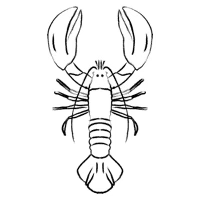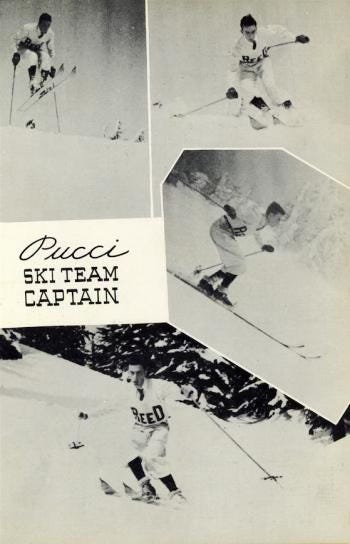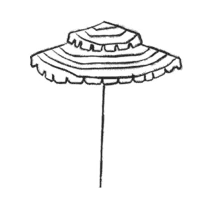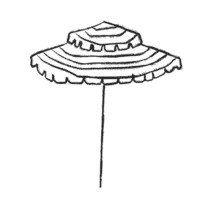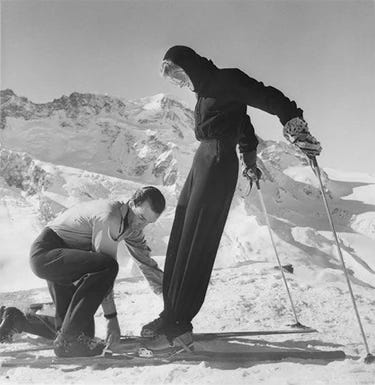
Marquis Emilio Pucci, born into Italian nobility, became a renowned fashion designer celebrated for his vibrant prints and innovative sportswear. Educated in Italy and the USA, he served as an aviator during WWII, which shaped his future endeavors. After the war, he launched a successful fashion career, opening his first boutique in Capri and gaining celebrity clientele including Marilyn Monroe and Jackie Kennedy. His life was marked by creativity, aristocratic connections, and a lasting impact on the fashion world.
Table of Contents: Early Life and Education / Georgia / Reed College / WWII: Ethiopia and Malta / Edda Ciano / Ciano’s Diaries / Escape to Switzerland / Gestapo / Career Beginnings / Rise to Fame / Later Life / Did you know?
If you aren’t subscribed yet, hit the subscribe button below to receive the Adorable Stories every weekend, directly in your inbox:
Emilio Pucci, the legendary Italian fashion designer, was born on November 20th, 1914, in Naples, Italy.
Emilio came from an illustrious Florentine family, tracing its noble origins back to the 14th century. His full name was: Don Emilio Pucci, Marquis of Barsento (referring to the family’s land on the Adriatic Sea).
His father, Marchese Orazio Pucci, was a prominent figure in Italian society, known for his contributions to agriculture and civic life. Emilio’s mother, Baroness Maria Cristina Pavoncelli, came from a lineage of Italian aristocrats, blending cultural sophistication with a strong sense of tradition.
Emilio’s home address was at Palazzo Pucci, in Via dei Pucci n. 6, in Florence, built for his family nearly 1,000 years ago.
According to the legend, Palazzo Pucci contains a Botticelli painting showing the use of forks for eating food, adopted for the first time in Florence by the Pucci family. It is said that once Catherine de’ Medici followed through and used a fork as well, the fad spread all over Europe.
Early Life and Education
After spending his childhood and teenage years in Florence, Emilio moved to Milan to study at “La Statale” University.
At 18 years old Emilio was already an accomplished athlete and an expert skier who represented Italy in the 1932 Winter Olympics at Lake Placid (albeit he did not compete).
Georgia
In 1935, he felt stifled by the snobbish and over-controlled life he was forced to live by his traditional and strict parents, and traveled halfway around the world: he finally enrolled at the University of Georgia, where he decided to study cotton agriculture and became a member of the Demosthenian Literary Society.
Emilio soon realised that cotton agriculture was not a particularly stimulating subject for him and the environment at the University of Georgia did not provide much of the intellectual inspiration he was looking for: at the beginning of WWII, he also found himself completely cut off from his family’s bank accounts as a result of sanctions against Italy and the growing chaos in Europe.
Emilio sought refuge in skiing and went on a trip to the slopes of Mount Hood, Oregon.
Reed College
In September 1936, on his way back to Atlanta he stopped at the office of Dexter Keezer, president of Reed College, to ask for help.
It was an unlikely meeting: Emilio was a young, old-money Italian aristocrat who found himself suddenly broke (despite his aristocratic pedigree, he had no funds for his education due to Italian exchange restrictions stemming from its war against Ethiopia).
Keezer, on the other hand, was a seasoned, self-made man from Massachusetts, a World War I veteran, former reporter, economist, and New Deal Democrat.
On top of that, the two men could have very probably guessed that their countries had a strong chance of opposing each other in a possible upcoming war: their meeting came as Fascist Italy and Nazi Germany were strengthening their military alliance and right after the 1936 Berlin Olympics.
The two men struck a deal: Reed College would provide Emilio with tuition, room, and board. In return, Emilio would form and coach Reed’s first ski team.
“His academic performance was first rate, and so was the zest and goodwill with which he tackled a variety of lowly chores on the campus—waiting on tables, washing dishes, scrubbing—to acquire a bit of cash to supplement the bare subsistence being provided to him.”
— Dexter Keezer, Reed College President
At Reed, Emilio not only formed the first ski team of the College, but also designed its official ski suit (photos above), showcasing his interest and ability in fashion and sportswear.
WWII: Ethiopia and Malta
After graduating in Social Studies from Reed College, Emilio returned to Florence to find a letter waiting for him: a government order to serve in the armed forces.
He reported for duty at the Italian Air Force base in Pisa and after training he was sent to North Africa and then Ethiopia.
After some time in Ethiopia, Emilio contracted a kidney infection: he returned to Italy and once recovered he was sent to Malta, where he participated in the Battle of Malta of June 1942, in the attempt of defending the island from the Allies attacks coming from Gibraltar and Alexandria, Egypt.
In Malta, he survived several fighter-pilot missions that destroyed the majority of his squadron, earned an Iron Cross for military valor and rose to the rank of captain.
Edda Ciano
In 1943, Emilio had a new health issue and was sent back to Italy to recover: while in Capri, Emilio’s destiny was forever altered by a chance meeting with a childhood friend: Countess Edda Ciano, the eldest daughter of Italian dictator Benito Mussolini, “Il Duce”.
Strong-willed and glamorous, Edda had volunteered with the Red Cross in Italy’s ill-fated invasion of Greece and had been aboard the Po, a hospital ship, when it was bombed and sunk by a British bomber. She survived by swimming to the shore and was now recovering in Capri.
Edda was married to one of her father’s most influential henchmen, Galeazzo Ciano. In the ’30s, Ciano had been Mussolini’s right-hand man, serving as chief propagandist and foreign minister.

Over time, however, Ciano grew disillusioned with Mussolini and the fascist party and in July 1943, after the Allied invasion of Sicily, he turned against the dictator and his regime: he was immediately imprisoned by Il Duce and his Nazi allies in Italy, on charges of treason and could be executed at any time.
Edda now found that her father had essentially ordered the death of her husband by death squadron. In desperation, she turned to Emilio asking for help.
Emilio’s youthful admiration for Mussolini had been shattered by the war. As he later said:
“I had idealized fascism while I was abroad, and was confronted now with corruption, lack of responsibility, and incompetence. I still believed in fascism, however, thinking it was the men who were failing and not the system.”
To Emilio, however, ideology was nothing compared to his friend’s request for help in a difficult time.
In Emilio’s own words:
“After listening to her story, I decided that it was my duty as an officer and an Italian to do all I could to help her… and that it was my duty as a gentleman to do my utmost.”
At Edda’s request, he agreed to intercede with Mussolini on her behalf, only to discover that, as she had warned him, “Mussolini would promise everything, but would do absolutely nothing.”
Mussolini claimed that he was powerless to release Ciano, since he was in the hands of the Gestapo.
Ciano’s Diaries
Fortunately, Edda and Emilio held a card that would prove to be one of the most significant documents of the entire World War II: Ciano’s secret diaries.
The Ciano diaries provided a detailed account of Mussolini’s inner circle from 1937 to 1943, plus incriminating revelations about top Nazi leaders.
Knowing that Ciano could be executed at any moment, Edda and Emilio tried to use the diaries as a bargaining chip with the Gestapo in order to have Ciano released.
After some negotiation, Himmler and Kaltenbrunner (top Nazi leaders at the time) agreed to release Ciano in exchange for them, but Edda and Emilio were suspicious and held back the chapters of the diaries dealing primarily with the Nazis: the so-called Germania papers.
They were right to be suspicious: the Nazis wanted the diaries but had no intention to release Ciano.
Escape to Switzerland
Deciding that it was too dangerous to stay in Italy, Emilio sewed a pouch on the back of Edda’s jacket to smuggle the Germania papers across the border into Switzerland.
Emilio managed to take Edda Ciano and her kids to Switzerland with his own Fiat Topolino Balestra. After her successful escape to Switzerland, she mailed desperate letters to her father and Hitler, stating that if her husband would not be released in three days, she would give the papers to the Allies.
Hitler himself vetoed any agreement with Edda for the release of her husband Galeazzo.
Galeazzo Ciano was executed by firing squad on January 11th, 1944.
End of Part 1: Part 2 will be out next week.
—Alberto @
Do you know anyone who would love to read this Adorable Story? Show your support by sharing Adorable Times’ Newsletter and earn rewards for your referrals.





